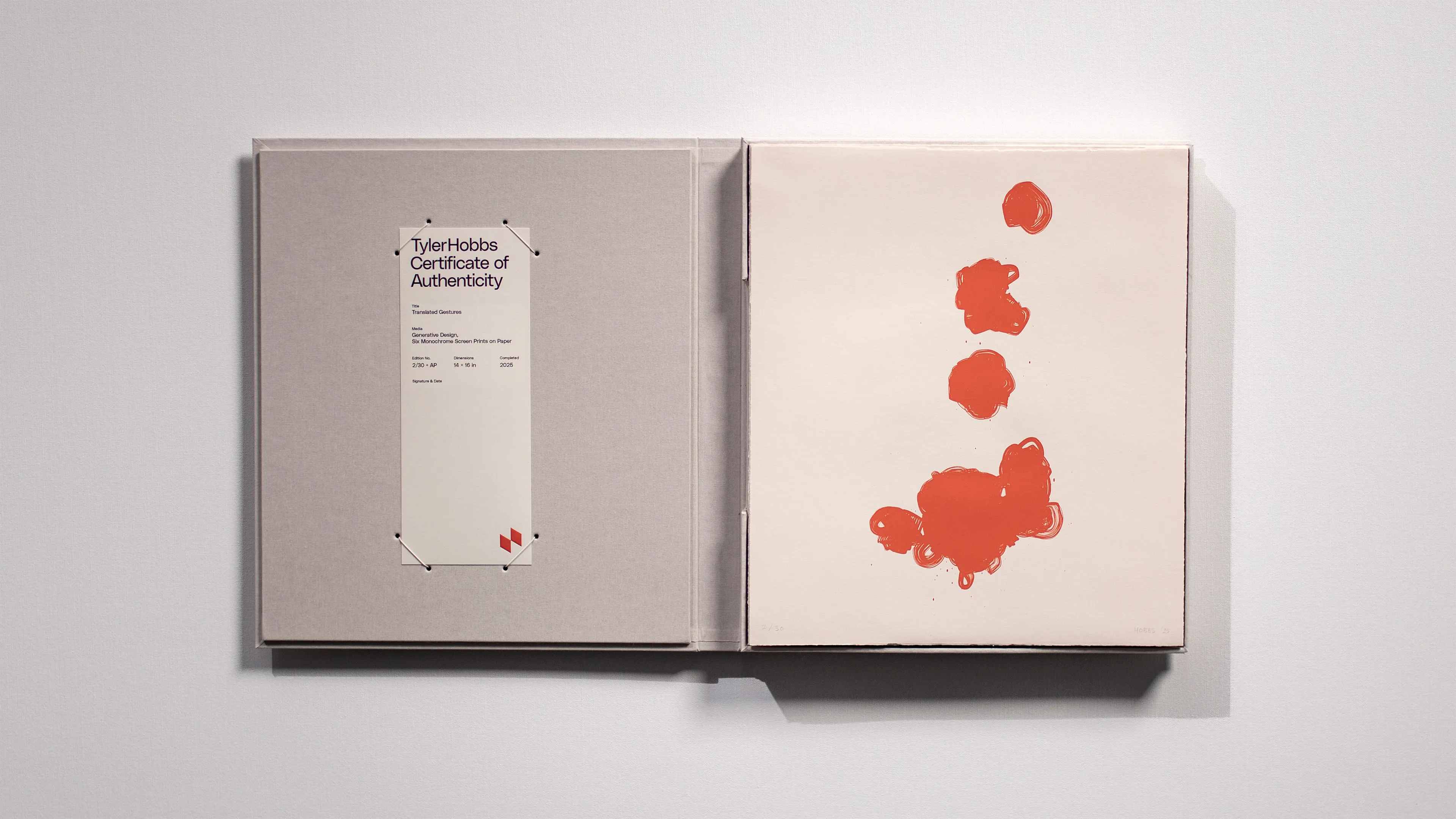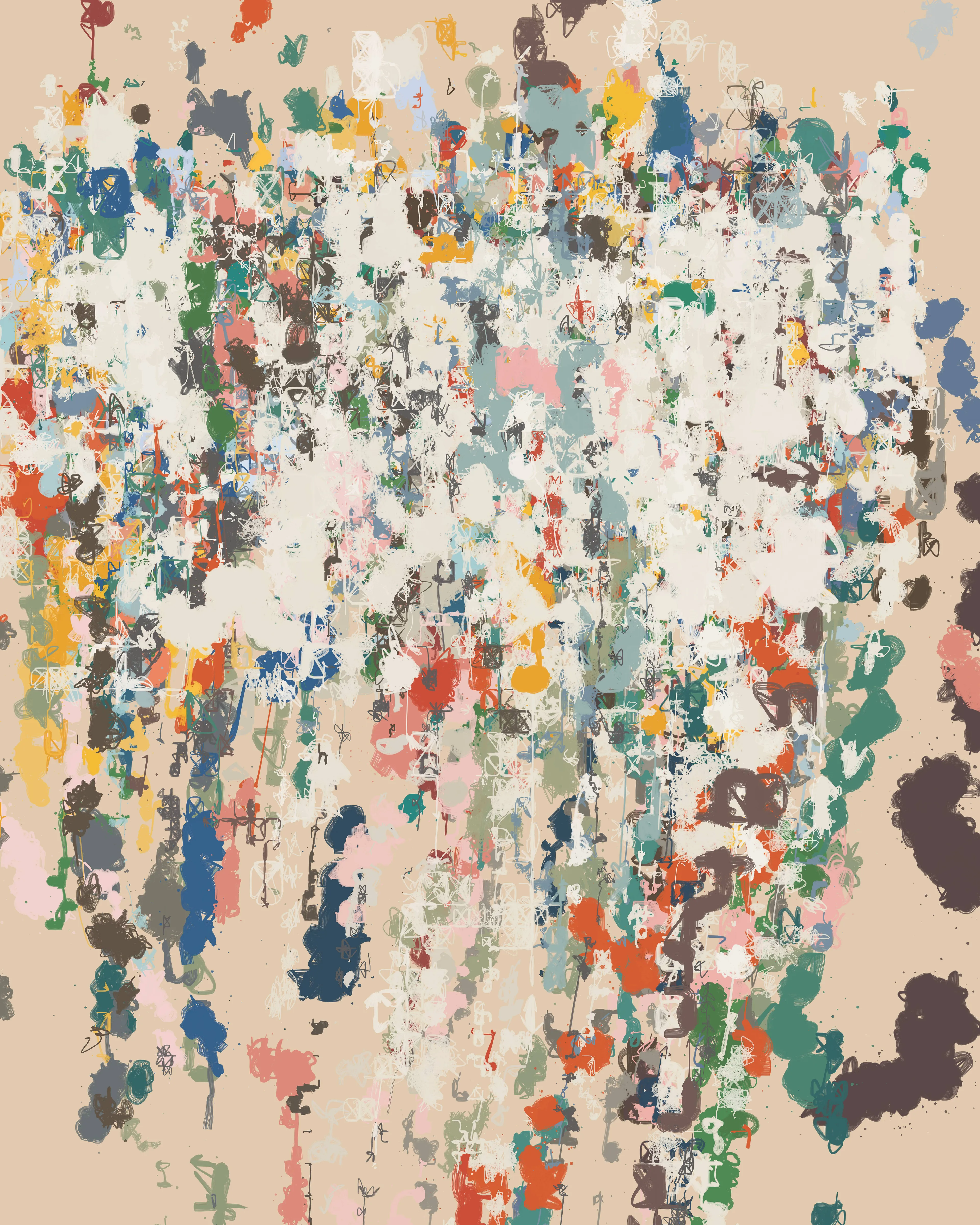Translated Gestures is a generative algorithmic series of six unique works, produced as monochrome limited edition screen prints on stonehenge paper, housed in a clothbound folio. The limited edition set is a companion piece to From Noise, as it extracts and highlights unique gestures from the more densely chaotic body of work and asks the viewer consider spontaneity, what it means, why we might value it, and if it needs to be tied to the body and the physical world.
View series


